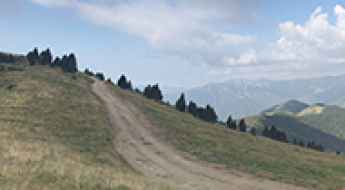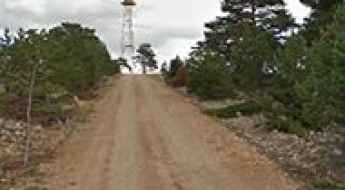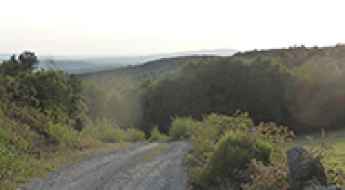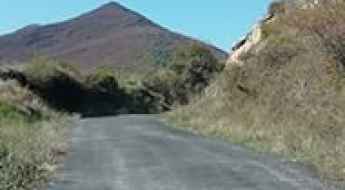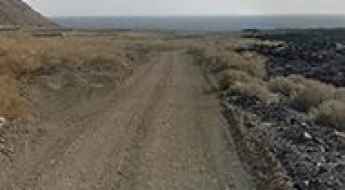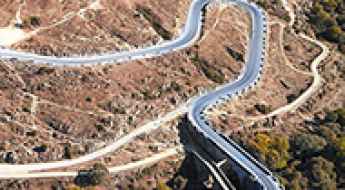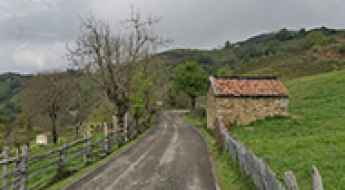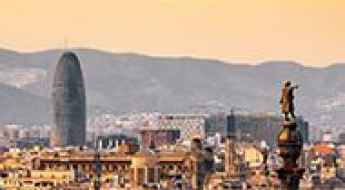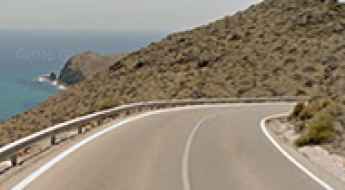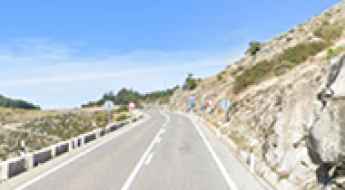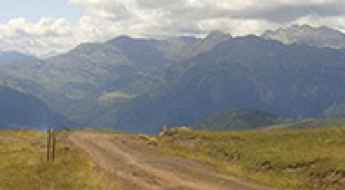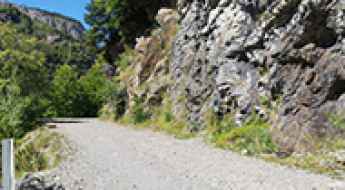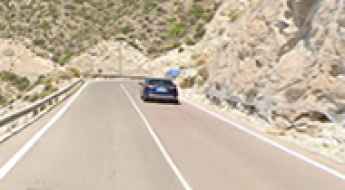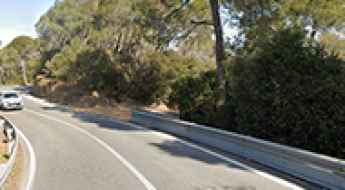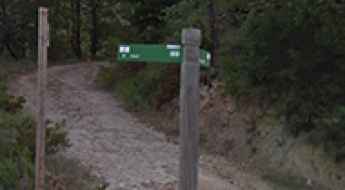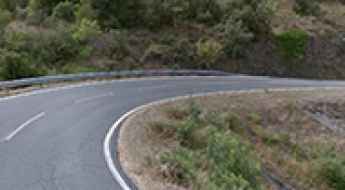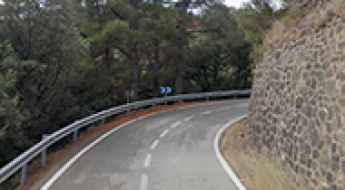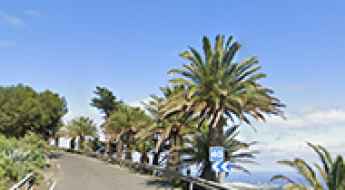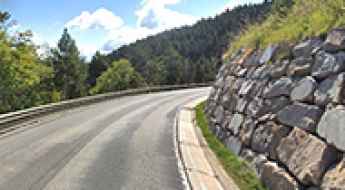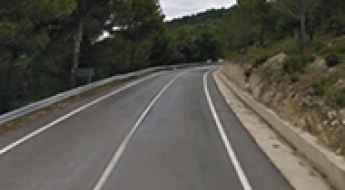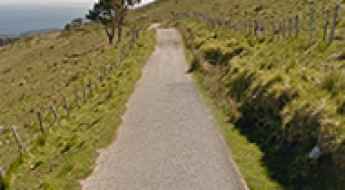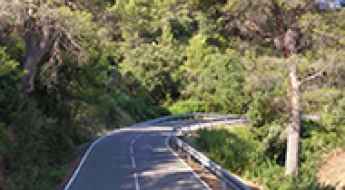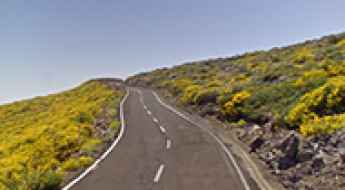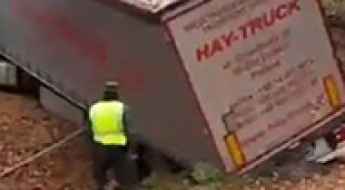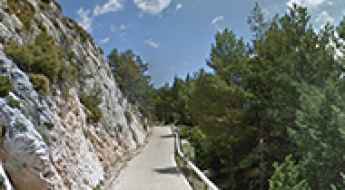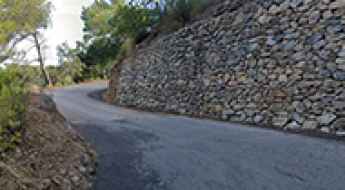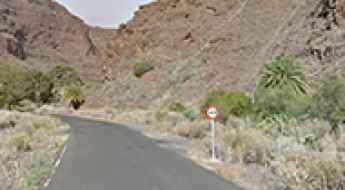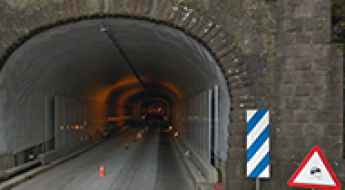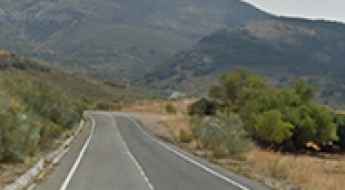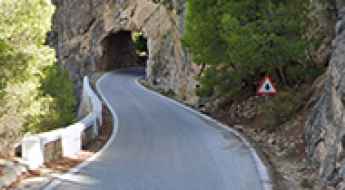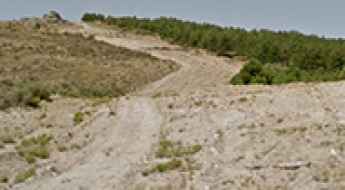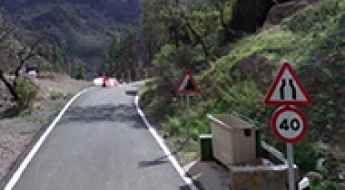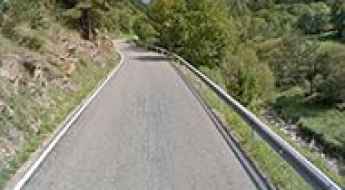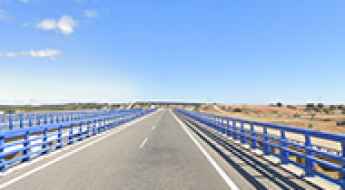What are the most spectacular roads in Spain?
Tucked away on the Iberian Peninsula, in the southwestern part of Europe, the roads of Spain offer the best way to discover the country’s diverse topography. It features mountain roads, even the highest paved road in Europe, as well as stunning coastal drives on the Balearic Islands and the Canary Islands.
The country is home to Pico del Veleta, the highest paved road in the European continent. Ending at 3,369m (11,053ft) above sea level, it's one of the highest roads in Europe. At an altitude of around 3,000m, road conditions become significantly worse. For those seeking mountain roads, Alto de l’Angliru is the ultimate cycling ascent in Asturias. Climbing up to 1.558m (5,111ft) above sea level, it’s one of the hardest and most epic climbs you can ride on two wheels.
If you’re up for a drive on scenic roads, Mallorca hosts two stunning drives: the sensational road to Formentor Lighthouse and Sa Calobra, the Snake Road. Located on the island of Mallorca, Sa Calobra Road is one of the most scenic drives in the world. Imagine dropping a long piece of wet spaghetti on the floor. The pattern it makes looks something like what the road looks. If you really want a challenge, try tackling it by bike. On the Canary Islands, GC-200 is an exhilarating road with 365 curves and spectacular views. The road has it all, from hairpin bends to sheer cliff-edge drops. It's one of the best roads on the Canary Islands.
So, rev up your engines and let Spain's spectacular routes guide you through a journey of soulful discoveries and unforgettable vistas. You will discover many treasures created by skilled workers employed by construction firms with tradition in Spain.
The Wild Road to Mina de Riosol in northern Spain
Mina de Riosol is an abandoned mercury mine at an elevation of 1.680m (5,511ft) above the sea level, located in the province of León, Castile and León, Spain.
Driving the wild Pista la Caña to the top of Punta Estaton in the Pyrenees
Punta Estatón is a high mountain peak at an elevation of 2,108m (6,916ft) above sea level, located in the Huesca province of Aragón, in Spain.
The Road To Muela de San Juan Has it All
Muela de San Juan is a high mountain pass at an elevation of 1.830m (6,003ft) above the sea level, located in the province of Teruel, Aragon, northern Spain.
An Unforgettable Drive to Monte Farelo in Galicia
Monte Farelo is a high mountain pass at an elevation of 948m (3,110ft) above the sea level, located on the boundary of Lugo and Pontevedra provinces, in Galicia, Spain.
Journeying through Spain's Echoing Canyon: Hoz de Valeria Road Adventure
Hoz de Valeria is the name of a very scenic canyon located in the heart of Cuenca province in the eastern part of the autonomous community of Castile-La Mancha, in Spain. It’s one of the most scenic canyon roads of Spain.
The Ultimate Guide to Traveling the Campo de Las Danzas
Campo de Las Danzas is a mountain pass at an elevation of 1.448m (4,750ft) above the sea level, located in the Province of León, in the autonomous community of Castile and León, in northwestern Spain.
A gravel road to the virgin Verodal beach in Canary Islands
Located on the northwestern coast of El Hierro, the smallest and farthest south and west of the Canary Islands, Spain, in the Atlantic Ocean off the coast of Africa, Playa del Verodal is a red volcanic sand beach.
Surviving the Spanish Death Road: A Comprehensive Guide to Navigating the M618 from Colmenar Viejo to Torrelodones
Located in the northwest of the Autonomous Community of Madrid, Spain, the tiny M618 road is nicknamed the Spanish Death Road. Better avoid it if you’re prone to car sickness.
Driving the wild Collado del Tejo
Collado del Tejo is a high mountain pass at an elevation of 1.889m (6,197ft) above the sea level, located in the province of Granada, in the region of Andalucia, southern Spain.
The inhumane climb to Alto La Colladiella, an iconic Spanish Vuelta climb
Alto La Colladiella is a mountain pass at an elevation of 848m (2,782ft) above the sea level, located in the province and autonomous community of Asturias, in Spain.
7 Mistakes to Avoid While Visiting Barcelona
The city of Barcelona is located on the northeastern Spanish coast. It is a beautiful city that is not simply for art enthusiasts and history buffs to appreciate, but attracts all of types of tourists all year-round. The city is a cosmopolitan destination known for its fine cuisine, luxurious fashion houses, and picturesque sandy beaches surrounding the Mediterranean Sea.
Things to Know Before Driving to Refugio de Las Hoyas in Almeria
Refugio de Las Hoyas is a high mountain refuge at an elevation of 1.981m (6,499ft) above sea level, located in Almería province, in Spain.
AL-4200 Road: Experience the Coastal Beauty of Almeria
Discover the breathtaking AL-4200, a captivating coastal road nestled in the eastern part of the picturesque province of Almería, within the enchanting autonomous community of Andalusia, Spain.
The Ultimate Road Trip To Puerto del Pico in Avila
Puerto del Pico is a mountain pass at an elevation of 1.391m (4,563ft) above the sea level, located in the province of Ávila, in the southern part of the autonomous community of Castile and León, in Spain.
The brutal climb to Cruz de Linares in Asturias with 16% ramps
Puerto Cruz de Linares is a mountain pass at an elevation of 842m (2,762ft) above the sea level, located in the province and autonomous community of Asturias, in Spain.
Driving the wild 4x4 road to Pedras Blancas in Aragon
Pedras Blancas is a high mountain peak at an elevation of 2.359m (7,736ft) above the sea level, located in the province of Huesca, within the autonomous community of Aragón, in Spain. It’s one of the highest roads of the country.
Driving the Challenging Bujaruelo Valley Road: A Scenic Adventure in the Pyrenees
Bujaruelo Valley Road is a very challenging drive, with concrete and gravel sections located in the northeastern part of Spain. It’s one of the best canyon roads in Spain.
Discover the Breathtaking AL-5107 Coastal Road and the Scenic Beauty of Almeria
Prepare to be enchanted by the breathtaking beauty of AL-5107, a picturesque coastal road nestled in the eastern part of Almería province, within the enchanting region of Andalusia, Spain.
Driving Carretera de l’Arrabassada, one of the most dangerous roads in Barcelona
Located in Barcelona, on the northeastern coast of Spain, Carretera de l’Arrabassada is said to be the most stunning yet dangerous road in the city’s area.
Road trip guide: Conquering Montagut
El Montagut is a mountain peak at an elevation of 948m (3,110ft) above the sea level, located in Tarragona province, in northeastern Spain’s Catalonia region.
The curvy road to Coll d'Alforja is only for experienced drivers
Coll d'Alforja is a mountain pass at an elevation of 641m (2,103ft) above the sea level, located in the province of Tarragona and autonomous community of Catalonia, Spain.
A pleasant drive to Coll Formic in Montseny
Coll Formic is a mountain pass at an elevation of 1.145m (3756ft) above the sea level located in the province of Barcelona, in the center of the autonomous community of Catalonia, in Spain.
Conquering the Challenging Road to Alt de Capolat, one of Catalonia's Hardest Climbs
Alt de Capolat is a mountain pass at an elevation of 1,307m (4,288ft) above sea level, located in Spain. Expect a concrete section on the steepest ramps, loose gravel, and slow speeds because it is a narrow, steep, and curvy road.
A touristic road to Bandama Caldera, a dormant volcano in the Canary Islands
Pico Bandama is a volcanic cinder cone adjacent to Bandama Caldera, at an elevation of 566 meters (1856 feet) above sea level, located in the Canary Islands, Spain.
GI-400 is a memorable road trip in the Pyrenees
GI-400 is a very scenic mountain road with stunning views located in the province of Girona, in the autonomous community of Catalonia, in Spain.
The brutal climb to Puerto de Onil with 15% ramps
Puerto de Canalís de Onil is a mountain pass at an elevation of 1.015m (3,330ft) above the sea level, located in the comarca of L'Alcoià, in the province of Alicante, in the Valencia region of Spain.
Things to Know Before Driving the Wild Road to Monte Jaizkibel
Monte Jaizkibel is a mountain peak at an elevation of 532m (1,745ft) above sea level, located in the autonomous community of Basque Country, in Spain.
Conquering the Curvy Wonders: Driving Adventures in Catalonia's Priorat Region
Nestled in Catalonia's picturesque Priorat region, you'll find an absolute haven for driving enthusiasts, with winding roads that carve through the rugged terrain and provide an exhilarating driving experience.
The Ultimate Road Trip To Pico Fuente Nueva in the Canary Islands
Pico Fuente Nueva is a high mountain peak at an elevation of 2.361m (7,746ft) above sea level, located on the island of La Palma in the Canary Islands, Spain. It's one of the highest roads in the country.
The Triangulo de la Pantaloneta in Spain terrifies Russian and Ukrainian truck drivers
Triangulo de la Pantaloneta is an area, located in the La Rioja region of Spain, that has gained notoriety as authorities frequently need to intervene to rescue trucks stuck amid steep roads, trees, and thick vegetation.
Driving the coastal Carretera del Cañarete is not easy due to the rockslides
Carretera del Cañarete is a very scenic, yet defiant, coastal road located in the southeastern part of Spain. The road is extremely defiant due to the high risk of rockslides.
Conquering Coll de Peguera: Catalonia's Challenging Mountain Road Adventure
Coll de Peguera is a mountain pass at an elevation of 1,721m (5,646ft) above sea level, located in the province of Barcelona, in Spain.
Driving the Panoramic L-501: The Road That Has It All
Located in the northern part of Catalonia, Spain, the Panoramic L-501 road has it all: great vistas, countless primitive stone tunnels, forested areas, parts carved into rock, narrow and curvy sections, and, above all, it is a quiet road not very crowded.
The volcanic road to Playa del Paso on the Canary Islands
Playa del Paso is a small beach with crystal blue water and black sand located in Lanzarote, one of the Canary Islands, in Spain.
The wild road to Port des Canonge in the Tramuntana Range of Mallorca
Port des Canonge is a small beach town located in the Balearic Islands of Spain. The road to the town is extremely challenging, with very sharp U-shaped curves.
Driving the stunning road through Barranco de Guayadeque on the Canary Islands
Barranco de Guayadeque is a stunning ravine with great views located in the eastern part of the island of Gran Canaria, in Spain. The road through the ravine is worth the drive.
Driving the Wild Road to Collada de Bracons in the Catalan Pre-Pyrenees
Collada de Bracons is a mountain pass situated at an elevation of 1,136m (3,727ft) above sea level, located in the comarca of Osona in Catalonia, Spain.
The So-Called 'Tunnel of Time': This is What Happens When Cars Pass Through It
This tunnel is located on the LP-3 road, on the island of La Palma, in Spain’s Canary Islands, and is called the La Cumbre tunnel. Drivers are always surprised by what happens when they exit it.
What Is the Curious Phenomenon Happening on a Road in Malaga That Leaves Experts Astonished?
On a section of the road that connects the town of Ronda with Gaucín, in southern Spain, there is a gravitational anomaly that experts have not been able to explain, continuing to baffle drivers.
The challenging road with 300 turns to Puerto de Tiscar in Andalusia
Puerto de Tíscar is a mountain pass at an elevation of 1,189 m (3,900 ft) above sea level, located in the province of Jaen, in Spain. The road through the summit features more than 300 turns.
A desert-like 4x4 road to Cerro de Maria Antonia in Andalusia
Cerro de Maria Antonia is a high mountain peak at an elevation of 1,924m (6,312ft) above sea level, located in Almeria Province, in the autonomous community of Andalusia, Spain.
How to get to Soria Waterfall in the Canary Islands by car?
Cascada de Soria is a wonderful waterfall located on the island of Gran Canaria, in the Canary Islands of Spain. Be warned, the mountain road to the waterfall isn’t for the faint-hearted.
Alto de la Cobertoria is a classic climb in Asturias
Alto de la Cobertoria is a mountain pass at an elevation of 1,181 meters (3,874 feet) above sea level, located in Asturias, Spain. The road to the summit is brutal, hitting a maximum gradient of 12.3% on some of the ramps.
Roadkill hotspots around the world
There are millions of roads in the world. Many of these roads cut across rural or uninhabited areas where numerous domesticated and wild animals wander freely. In this article, we reveal some of the most vulnerable animals and accident hotspots in 10 selected countries (based on most cars per capita).
What is the Via de la Plata, a 700km route in the west of Spain?
From Seville to Gijón, passing through monumental cities like Mérida, Salamanca, León, and Astorga, this route follows the historic Roman road that connected the north and south of Spain, one of the most important in the Iberian Peninsula. This fascinating journey allows you to discover the cultural, gastronomic, and landscape diversity of four regions in Spain: Andalusia, Extremadura, Asturias, and Castilla y León.

